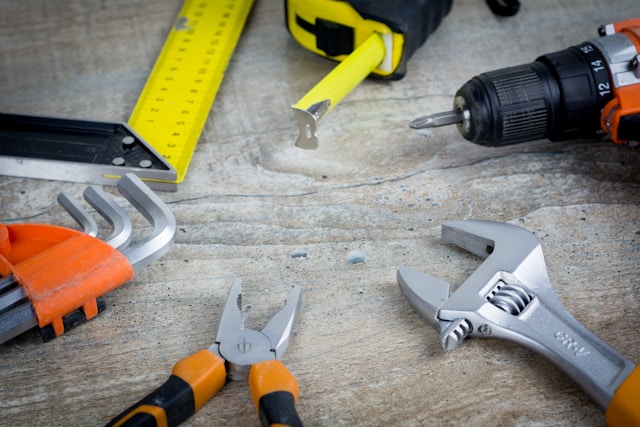Essential Considerations Before Hiring a Property Restoration Service
When hiring a property restoration service, it’s essential to evaluate their credentials, including certifications from industry organizations like the IICRC and RIA, as well as valid general contractor and environmental remediation licenses. Verify technicians hold specialized certifications, such as ASD and AMRT, and confirm the company’s experience with multi-trade restoration projects. Understand the range of services, including water damage, fire restoration, and mold remediation, and substantiate their safety protocols and emergency response capabilities. Also, check their legal and insurance compliance, health hazard containment protocols, and cost transparency. For an exhaustive guide to making the right choice, continue to explore these key considerations.

Evaluating Credentials and Certifications
When evaluating a property restoration service, examining the company’s credentials and certifications is essential to ensuring the work is done safely, efficiently, and to industry standards. Look for certified restoration technicians, especially those trained by the Institute of Inspection, Cleaning and Restoration Certification (IICRC). Certifications such as Applied Structural Drying (ASD) or Applied Microbial Remediation Technician (AMRT) indicate the team has undergone specialized training.
Additionally, check if the company holds valid contractor and environmental remediation licenses. These are often required for projects involving hazardous materials like asbestos or mold. Credentials from industry associations like the National Association of Home Builders (NAHB) or the Restoration Industry Association (RIA) further validate a company’s expertise and adherence to professional standards.
Understanding the Scope of Services Offered
After verifying a company’s credentials, it’s important to understand the scope of services offered. Ask whether the company handles water, fire, mold, and biohazard remediation — and whether they manage these services in-house or subcontract them.
Clarify the company’s restoration methodology. Do they implement outside-in scoping to set natural boundaries for the work? Do they outline a clear plan for temporary services, containment, personal protective equipment (PPE), and waste disposal?
Getting a written scope of work helps avoid hidden costs, delays, or misunderstandings. It also ensures the project meets all necessary regulatory and safety requirements.
Questions to Ask About Response Time and Availability
Time is critical in restoration. Ask each company how quickly they can mobilize after a call. Many reputable companies aim to respond within a few hours — ideally within the “golden hour” — to minimize damage and reduce long-term costs.
Ensure they offer 24/7 emergency services. Water damage, fires, and storm events don’t occur on a schedule, so accessibility is crucial. Also, ask about average turnaround times for inspection, mitigation, and repair phases.
Understanding these logistics helps you gauge whether the provider can manage your emergency cleanup response efficiently and reliably.
Legal and Insurance Considerations
Hiring a properly licensed and insured provider is not just best practice — it protects you legally and financially. Confirm that the company has an active general contractor license, especially if your restoration project exceeds monetary thresholds set by your state.
Ask if they will obtain any necessary permits for structural work, asbestos remediation, or hazardous material disposal. Non-compliance can result in fines or project shutdowns.
Also, review your insurance policy and verify the restoration company has experience working directly with insurers. They should assist with claims documentation and billing in accordance with insurance restoration guidelines.
Health Hazards and Containment Protocols
Property damage can introduce health risks, including mold spores, chemical contaminants, and biohazards. Make sure the restoration company uses robust containment and remediation protocols.
Key considerations include:
- Source Containment: Isolate contaminants to avoid spreading to unaffected areas.
- Physical Barriers: Use plastic sheeting, zip walls, or temporary walls to seal off work zones.
- Infection Control: Implement safety measures for occupants and workers, especially in cases involving sewage, mold, or toxins.
- Risk Assessments: Conduct evaluations of potential environmental or structural hazards.
- Decontamination Areas: Create designated zones for cleaning equipment and disposing of contaminated materials.
These practices reduce risk and demonstrate a serious commitment to health and safety.
Communication and Documentation Practices
Clear communication is essential to keep your project on track. Identify a primary point of contact who will serve as the liaison between you and the restoration team.
Ask about project updates and communication tools. Many providers use restoration software that lets you view real-time progress, photos, and documents. Having access to this information helps ensure transparency and builds trust.
Documenting work — including pre- and post-mitigation photos, moisture logs, and invoices — is also essential for insurance reimbursement and long-term maintenance planning.
Cost Transparency and Billing Structure
Restoration projects can be expensive. That’s why it’s important to request a detailed, written estimate that includes:
- Cleanup and Mitigation: Water extraction, drying, demolition, etc.
- Material Costs: A list of finishes, fixtures, and other material expenses.
- Labor Rates: Hourly or project-based labor fees.
- Overhead and Equipment Fees: Especially for specialized tools or emergency response.
- Insurance Handling: Whether the company will bill your insurer directly or require out-of-pocket payments.
Restoration costs can also vary based on your location and the complexity of the damage. Make sure to clarify which services are included, which are optional, and whether there are any cancellation or change fees.
Coordination with Other Professionals
Restoration jobs often require collaboration with other professionals — contractors, structural engineers, electricians, and adjusters.
Ensure your restoration company has experience managing multi-trade projects and coordinating with external parties. They should also be willing to communicate directly with your insurance provider to streamline claims and compliance reviews.
Ask whether the company is part of a verified contractor network, such as those managed by national insurance carriers. This can reduce delays and improve accountability, as these networks require providers to meet strict performance and service benchmarks.
Also, confirm that any subcontractors they use are properly licensed and insured, and that you’re informed before outside help is brought in.
